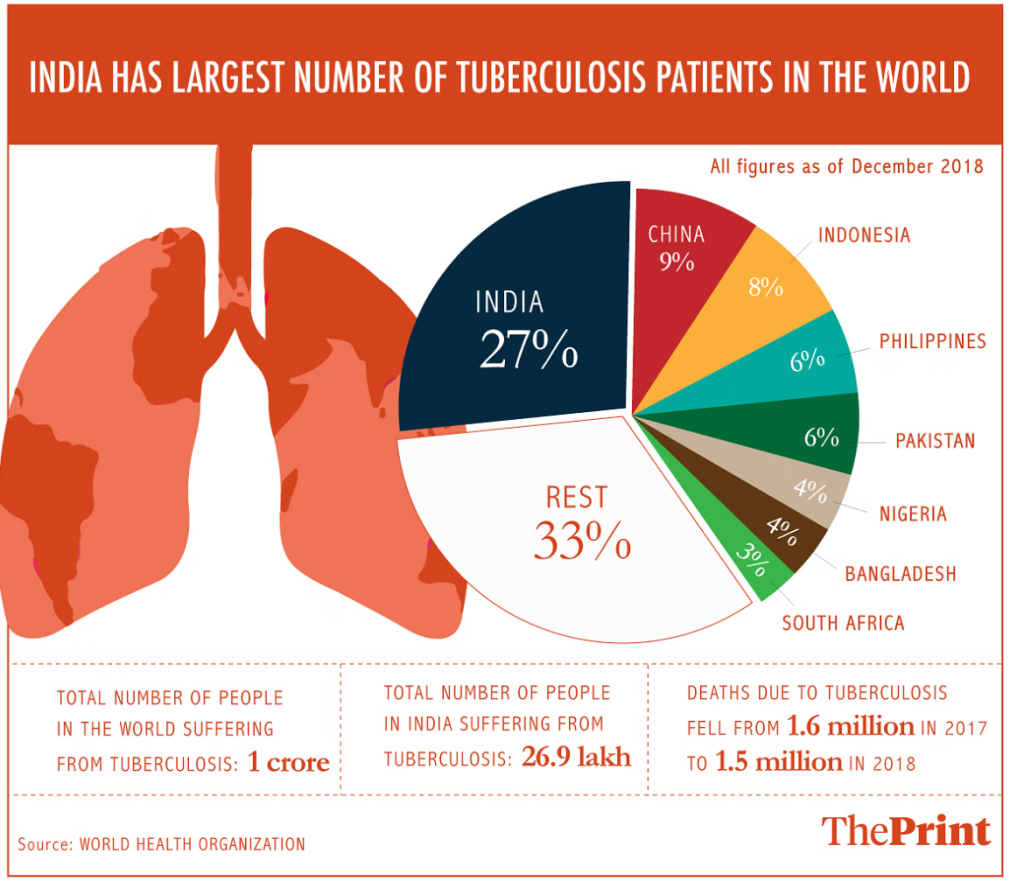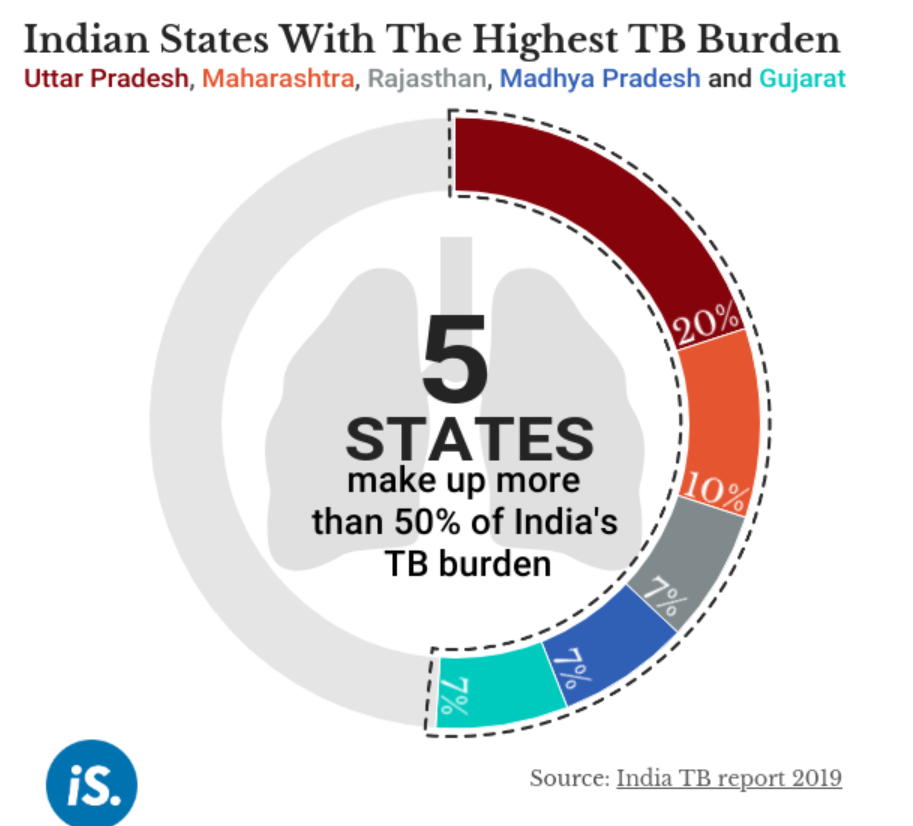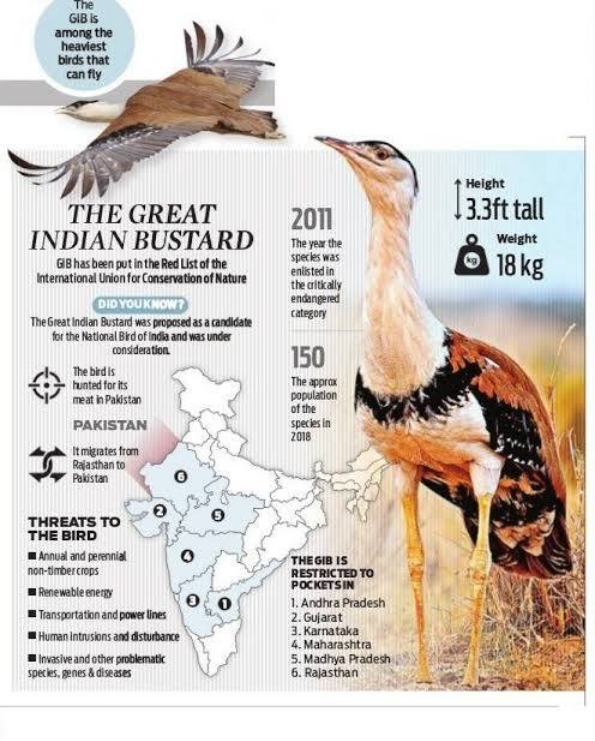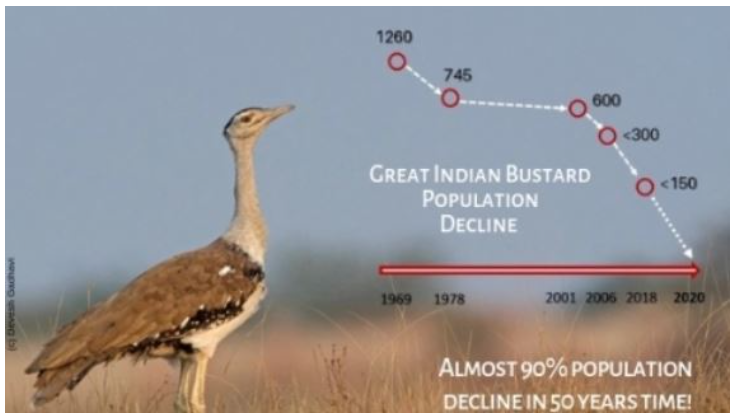CONTENTS
- Gross Mismanagement in Tuberculosis Control
- Climate Change as a Fundamental Right
Gross Mismanagement in Tuberculosis Control
Context:
A circular dated March 18, 2024, issued by the Health Ministry to all States, acknowledges that the supply of certain drug-sensitive medicines of Tuberculosis may face delays due to unforeseen and external circumstances. While States have been instructed to procure drugs locally for a three-month period, the circular also provides an option for States to reimburse the costs of medicines procured by patients if district health facilities fail to provide them free of charge.
Relevance:
GS2-
- Health
- Government Policies and Interventions
Mains Question:
Is India falling behind in efforts to control tuberculosis? What are the challenges in elimination of Tuberculosis from India? How successful have government initiatives been in this regard? (15 Marks, 250 Words).
About Tuberculosis:
- Tuberculosis, caused by the bacterium Mycobacterium tuberculosis, is an infectious disease that can affect virtually any organ in the body. Predominantly, it targets the lungs, pleura (the lining around the lungs), lymph nodes, intestines, spine, and brain.
- Transmission of tuberculosis occurs through airborne particles, primarily in close contact settings, especially in areas with high population density and inadequate ventilation.
- Common symptoms of active lung tuberculosis include persistent cough with sputum, occasional blood in the sputum, chest pains, weakness, weight loss, fever, and night sweats.
Types of Tuberculosis:
Pulmonary Tuberculosis:
- Pulmonary TB is characterized by its effect on the lungs, making it the most contagious type of TB. However, transmission typically occurs only after prolonged exposure to an individual with the illness.
- In most cases, the body’s immune system effectively eliminates the bacteria without causing any symptoms in healthy individuals.
Latent Tuberculosis:
- Latent TB occurs when the immune system is unable to eradicate the bacteria but successfully prevents its spread throughout the body.
- While individuals with latent TB do not exhibit any symptoms, the bacteria persist within the body. Importantly, individuals with latent TB are not contagious to others.
Active Tuberculosis:
- Active TB occurs when the immune system fails to either kill or contain the infection, allowing the bacteria to proliferate within the lungs or other organs, leading to the development of symptoms within a few weeks or months. This form of TB is contagious.
- Despite approximately one-quarter of the global population being estimated to carry TB bacteria, only 5-15% of those infected will develop active TB disease.
- It’s crucial to note that latent TB has the potential to progress into active TB disease, particularly if the individual’s immune system becomes compromised at a later stage.


Scarcity of Crucial Drugs:
- With less than two years remaining to achieve the ambitious goal set by the Prime Minister in 2018 to eradicate TB in India, the pharmaceutical sector of the Global South finds itself once again grappling with the treatment of patients afflicted with drug-sensitive TB.
- Alarmingly, India is currently facing a shortage of TB medication, a problem that seems to be escalating in frequency.
- Merely seven months ago, there was a severe scarcity of crucial MDR-TB drugs; disruptions in drug supply, which initially affected drug-sensitive medications in 2022, subsequently extended to encompass MDR-TB drugs, persisting for nearly a year.
- Likewise, in September 2021, India confronted a depletion in the stock of the MDR-TB drug Delamanid. The delay in diagnosing and initiating treatment is already a significant concern in the TB care continuum.
- Another concerning aspect is the number of patients who commence therapy but do not achieve successful treatment outcomes. However, tackling this issue, assuming the availability of drugs, will become increasingly challenging if instances of drug shortages become recurrent.
- A study conducted in 2010 revealed that the unavailability of drugs accounted for 8% of non-adherent patients missing their treatment regimen. Ensuring the consistent availability of medicines for various categories of TB patients across India should be an unquestionable priority.
- The fact that 14 years have passed since then, and with the target date of 2025 drawing near, there still exists a shortage of drug-sensitive TB medicines, which are exclusively manufactured in India by multiple entities, only serves to underscore the inadequate management of the national TB program.
Fundamental Issues remain Unaddressed:
- Renaming the National TB Control Programme to align with the Prime Minister’s goal as the National TB Elimination Programme, without addressing fundamental issues such as drug availability, reflects a profound incompetence and a lack of seriousness in combating TB effectively.
- Compounding this issue is the decision by the Health Ministry to authorize States to procure drugs locally at the eleventh hour, resulting in significant challenges at the grassroots level.
- The last-minute approval granted to States for local procurement is highly criticized. Furthermore, shifting the burden of purchasing medicines onto patients, even as a last resort, is deplorable, especially considering the predominantly low socioeconomic background of TB patients in India.
- Rather than making strides toward achieving the 2025 goal, India appears to be struggling with the most fundamental aspects of TB control.
Way Forward:
- The development and widespread adoption of an adult TB vaccine aim to reduce production costs, ensuring greater availability of anti-TB drugs for all individuals.
- Additionally, efforts are underway to innovate injection-free and oral pill formulations for TB treatment, enhancing accessibility and ease of administration.
- The utilization of AI-assisted handheld radiology, offering rapid and highly accurate TB diagnosis within 90 seconds with a 95% accuracy rate, represents a significant advancement in TB detection methods.
- To achieve the ambitious goal of eliminating TB by 2025, India must prioritize sustainability through strategic investments, targeting areas with the greatest need and adequately resourcing TB initiatives.
- Collaborative efforts and unwavering commitment are essential for India to overcome its TB burden and reach its target.
- Emphasis should be placed on understanding key determinants such as poverty, malnutrition, and tobacco use, with prevention being prioritized over cure.
- Furthermore, addressing gaps in the public healthcare system is imperative, as this is the primary avenue through which millions of Indians seek medical treatment.
Conclusion:
Despite the efforts of the Revised National Tuberculosis Control Program to improve patient diagnosis, provide free tests and medications, extend adherence support, and engage private healthcare providers, there is still room for improvement. Continued efforts and innovation are needed to further enhance TB control measures and ultimately eliminate the disease burden in India.
On Climate Change as a Fundamental Right
Context:
The recent ruling by the Supreme Court of India, recognizing the right to be protected from the adverse impacts of climate change as a distinct fundamental right, marks a significant stride towards promoting a healthy environment and sustainable development within the nation. While the apex court had previously acknowledged the right to inhabit a clean environment as inherent to the right to life under Article 21 of the Constitution, it now asserts that safeguarding individuals from climate change and ensuring a wholesome environment are intricately intertwined.
Relevance:
GS2-
- Indian Constitution
- Fundamental Rights
- Judgements & Cases
GS3-
- Conservation
- Environmental Impact Assessment
Mains Question:
Right to be free of climate change effects comes amid a conservation dilemma. Analyse in the context of the conservation status of the Great Indian Bustard in India. (15 Marks, 250 Words).
More on the Ruling:
- With the escalating threat posed by climate change becoming increasingly evident year after year, the Court contends that it is imperative to delineate the right to be shielded from its adverse effects as a separate and essential entitlement.
- The Court elaborates on how the unpredictable manifestations of climate change, such as escalating temperatures, intensifying storms, prolonged droughts, and the resulting food shortages stemming from crop failures and shifts in disease vectors, detrimentally impact human life and well-being.
- Moreover, should environmental degradation and climate change exacerbate food and water scarcity, the right to equality itself stands compromised, particularly affecting economically disadvantaged and underserved communities who lack the resources to effectively navigate such adversities.
Background:
This heightened focus on climate change emerged within the context of a legal case juxtaposing concerns over the mass fatalities of the Great Indian Bustard due to collisions with solar power transmission lines against India’s international commitments to mitigate emissions and augment its energy capacity through non-fossil fuel sources.
The Great Indian Bustard:
- The Great Indian Bustard (Ardeotis nigriceps), revered as the State bird of Rajasthan, stands as India’s most critically endangered avian species.
- It serves as a symbol of the grassland ecology’s vitality, being hailed as the flagship species representing these habitats.
- Although primarily found in Rajasthan and Gujarat, smaller populations inhabit Maharashtra, Karnataka, and Andhra Pradesh.

Vulnerability:
- This majestic bird faces persistent threats, including collision/electrocution with power transmission lines, hunting (still prevalent in Pakistan), and habitat loss due to extensive agricultural expansion.
- Additionally, the Great Indian Bustard’s slow reproductive rate adds to its vulnerability, with a reproductive cycle characterized by laying a few eggs and an extensive parental care period lasting nearly a year. These birds typically reach maturity over a span of 3-4 years.

Protection Status:
Designated as Critically Endangered by the IUCN Red List, listed under Appendix I of CITES, and included in Appendix I of the CMS. Furthermore, it holds Schedule I status under the Wildlife (Protection) Act, 1972.
Steps Taken to Conserve the GIB:
Species Recovery Programme:
Under the aegis of the Ministry of Environment, Forests, and Climate Change (MoEFCC), the GIB is a focal point of the species recovery program within the Integrated Development of Wildlife Habitats initiative.
Firefly Bird Diverters:
Installation of firefly bird diverters on power lines serves as a protective measure. These flaps act as reflectors, aiding bird species like the GIB in spotting power lines from a distance of approximately 50 meters, thus altering their flight path to avoid collisions.
Artificial Hatching:
- Commenced in 2019, the conservation breeding program involves collecting eggs from the wild for artificial incubation. Notably, the first chick, named ‘Uno,’ hatched on June 21, 2019, marking the beginning of this initiative.
- Subsequently, eight more chicks were successfully hatched and reared under close monitoring. Presently, a total of 29 GIBs are housed across two breeding centers in Rajasthan.
National Bustard Recovery Plans:
Ongoing implementation of comprehensive recovery plans for the bustard species is underway through various conservation agencies.
Conservation Breeding Facility:
A collaborative effort between MoEF&CC, the Rajasthan government, and the Wildlife Institute of India (WII) culminated in the establishment of a conservation breeding facility within the Desert National Park at Jaisalmer in June 2019.
Initiated by the Rajasthan government, this project aims to construct breeding enclosures and develop infrastructure to alleviate human pressure on GIB habitats, thereby contributing to the species’ conservation efforts.
Supreme Court on the Protection of the Great Indian Bustard:
- Through this case, the Court grapples with the complex interplay between environmental conservation, sustainable energy practices, and the imperative to address climate change while ensuring equitable outcomes for all segments of society.
- The scenario presents a dilemma that is unique to certain regions of the country. The Bench found itself confronted with a petition filed by three Union Ministries — Environment, Power, and New and Renewable Energy — seeking alterations to the Supreme Court’s directive issued in April 2021.
- This directive aimed to safeguard the critically endangered Great Indian Bustard from fatal collisions with power transmission lines erected by solar energy companies in Rajasthan and Gujarat.
- The earlier mandate had stipulated the installation of all low-voltage power lines in both ‘priority’ zones (where the bird is known to inhabit) and ‘potential’ areas (where conservation efforts are underway) to be underground, with existing overhead lines to be converted accordingly. Additionally, it had ordered the relocation of high-voltage lines in identified regions underground.
- However, the requested modification was necessitated by the impracticality and exorbitant costs associated with converting to underground lines, particularly detrimental to the renewable energy sector. This is especially significant as the area holds substantial potential for solar and wind energy generation.
- In response, the Court has delegated the responsibility to an expert committee to determine the appropriate balance between underground and overhead lines, while also rescinding its prior directives.
Conclusion:
It is regrettable that the imperative to reduce the country’s carbon footprint and the necessity to protect a critically endangered species appear to be conflicting goals. Urgent resolution of this dilemma is imperative, with a swift and equitable solution being the optimal path forward.



